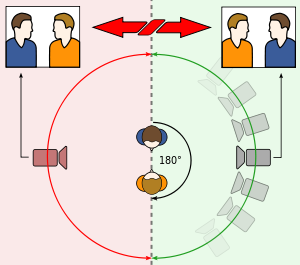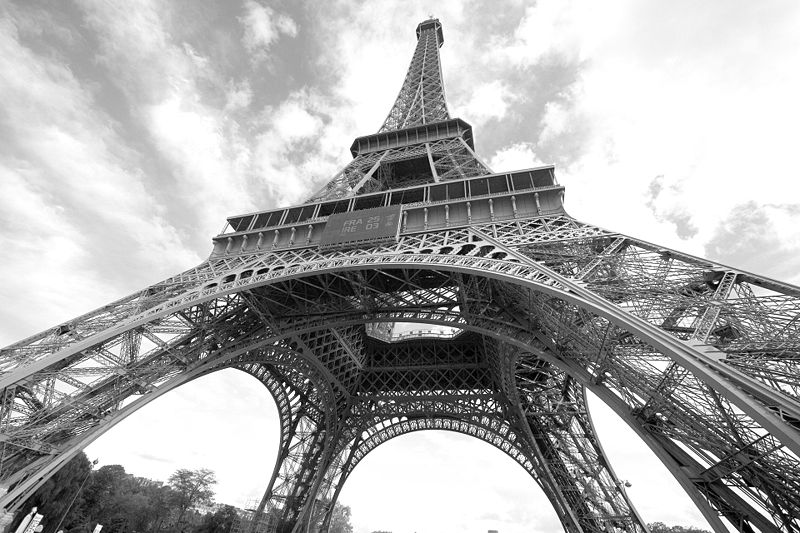The man fits into the Homosexual stereotype very well not a man stereotype. Feminine.
When woman loses ring she is shown as a charecter that is very weak, she uses phrases such as my husband will kill me which makes the male sound more dominant.
Sound gets faster as the exract goes on, when scene changes music slows down as what the man is saying is more important than music.
Other man is blonde and a typical man stereotype.
Talk to the audience.
Binary oppositions, complete opposites(rich vs poor).
Women are less powerful keeping people occupied.
Varisimitude: realism.
Wipes on Tv drama as they are both happening at the same time.
Man in Bar, Women in shop.. happens exactly same time, parellel narrative.
Obvious cut.
Helping the audience establishing.
Close up helps the narrative or the ring.
Looking down on the poorer women.
Pans up on the blonde man suggests he as a male is very important.
Direct mode of adress, breaks the fourth wall along with the wipes causes a comical part to the scene.
Posh lady has pronouced english which suggests money and a good upbringing.
Sexual connatations the way she is reacting with her dress.
Stereotypical connotation as women is shopping in the middle of the day and man is working.
didnt flutter an eyelid when she spent 3000, going to be late for her hairdressing appointment.
Essay..
Overall the gender representation constructed in this sequence conforms to stereotypes; placing the men in the more powerful roles and objectify the female (Mulvey, 1964). As the scene opens you are shown a wide angle shot of the 3 characters, this helps us to have a clear view of where the extract is taking place and also give us a higher understanding of the characters. The male shop assistant is represented and shown to be a homosexual or camp character this is shown by the use of dialogue and his feminine actions, also the setting of the shop he works in helps us to come to that conclusion. In the first extract you see Binary oppositions between the two women, one women being blonde and rich and the other being poor. The Posh lady has pronounced English which suggests money and a good upbringing. The camera angle looks down (high angle shot) on the poor lady which suggests she is at a much lower level than everyone else in the shop not only visually but in society also. The blonde woman is shown to be quite a strong character, and fits into the typical stereotype of a woman. She is very well-dressed in a black suit which shows off her femine figure and put her into Mulvey’s male gaze perfectly, as an audience we all watch as Voyeurs. The close up and eye line shots of her £3000 wedding ring connotes to her being high up in society. When she asked the shop assistant for a particular brand of dress it proves she has knowledge in fashion, and fashion is one of the main representations a women can have. Although when the woman loses her ring she is shown to be very weak character, she uses phrases such as ‘my husband will kill me’ which makes the male sound much more dominant and in control. The music fastens as the women is hurrying around and a quick transition to the pub scene slows it straight back down again as the male voice is more important than the music. The wipes between scenes help to the verisimilitude within the tv drama. The man in the bar is shot in a very stereotypical way which is then wiped onto the women in a shop which is the feminine stereotype. When the blonde man enters the shop the camera angle pans up and down him, this suggests to the audience that he is a very important character. The blonde man and blonde woman use a direct mode of address to the audience breaking the fourth wall; this helps to build comedy but defeats the idea or verisimilitude. When the women is trying on her dress she and the homosexual man both use sexual connotations and when she spends $3000 on the dress she does not flutter an eyelid. It is shown that she spends the money and the man does the work which again is the stereotypical couple. As the extract goes on the music gets incredibly faster as the women is in a panic the music helps you to feel the urgency and panic she is feeling, but a quick jump shot to the man in the bar however slows down and turns down the music as the man is more important than the music obviously.


















